What is a patchwork ruler and how to use it?
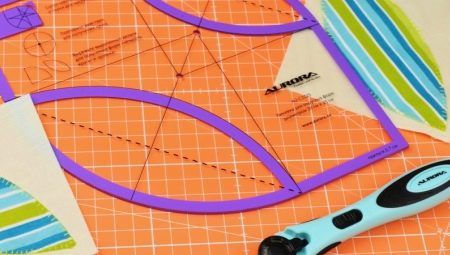
Translated from English "patchwork" means "products from patches"... It is a mistake to think that such canvases are sewn from randomly cut pieces of fabric. Patchwork is a long-standing, well-organized and multi-technique art. To make the product look neat and harmonious, the fabrics are cut in a certain way, following a specific technique. To help the craftswomen, special rulers were invented, which became one of the basic tools for patchwork.
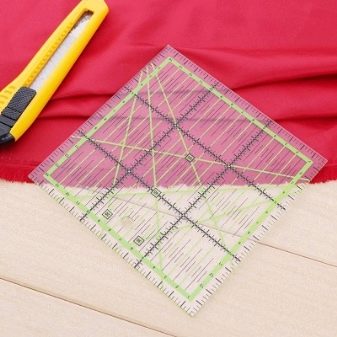
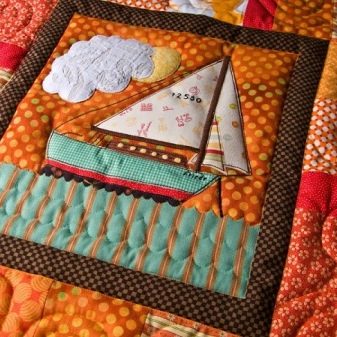
Description
Patchwork rulers are varied. They are made of non-slip and necessarily transparent material, which makes it possible to see the fabric, take into account the pattern and small details. The products are of moderate thickness (up to 3 mm), durable and not damaged by a roller (cinnamon) knife.
The edges of the products are laser processed, which allows you to make the most accurate cut lines. Models come in different shapes, each with convenient markings, for example, blocks of rectangles, different types of corners, allowances. Using the tool, you can produce curly cutting out flaps. The rulers save time for the craftswoman, they make it possible to sew without patterns and patterns, without drawing a pattern on the fabric.
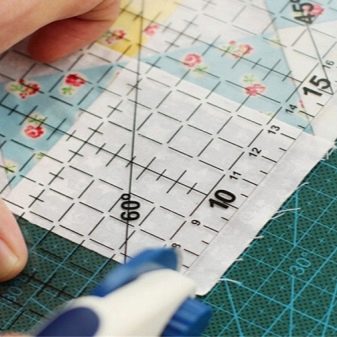
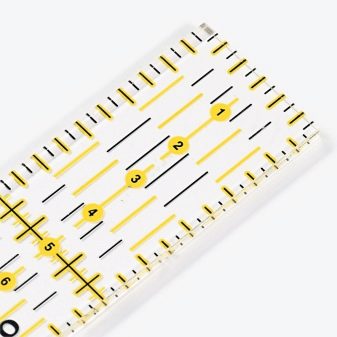
The ruler lines are in centimeters or inches. If a rug (mat) with markings in inches has already been purchased for work, the ruler should be bought with the same measurement, otherwise it will be impossible to combine the lines.
Craftswomen, seriously passionate about their work, have a whole set of rulers, designed for cutting uneven shapes and working with different fabrics. Handicraft stores offer special stands for them, allowing you to conveniently store the entire tool in one place.
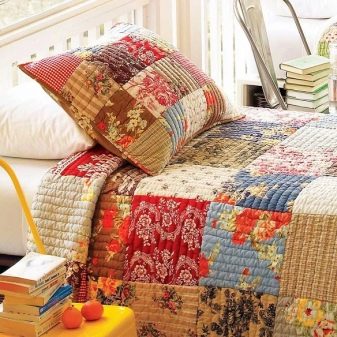
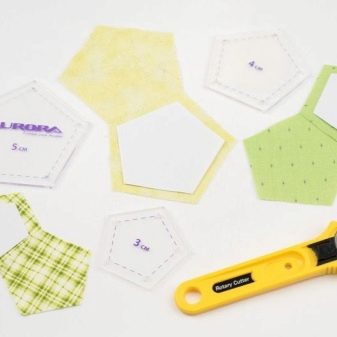
Views
There are quite a few patchwork sewing techniques that use curly cut details. To get them, different types of rulers are used. The variety of such a tool is carried out using varieties of materials, as well as in a rich selection of sizes and shapes.
By size
As noted, dimensions can be supplied in centimeters and inches. The coincidence of the markings on the ruler with the work mat is a prerequisite. In inches, most often you can find tools of three main parameters.
- 6x24 - using such a model, it is easy and quick to cut fabrics into strips, as it is tightly held along the entire length. The knife produces crisp lines without sliding off the edge of the ruler.
- 6.5x6.5 - an equilateral tool has an additional scribing square in the middle of the ruler. The model is useful for cutting fabric diagonally, as well as for creating square and triangular flaps.
- 12.5x12.5 - a large ruler, well traces the evenness of corners, is used to cut squares and rectangles. A tool of this size is convenient for creating blocks from which volumetric canvases are formed: blankets, panels, carpets.
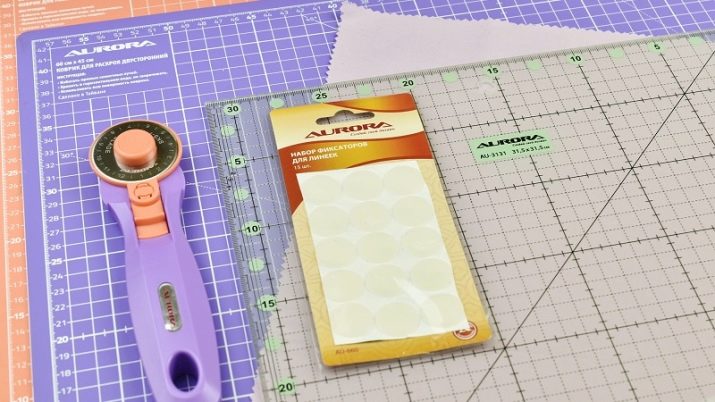
By forms
Some types of rulers specialize in working with parts of a certain shape:
- square;
- round;
- wedge-shaped;
- triangular;
- polygonal;
- scallop;
- non-standard.
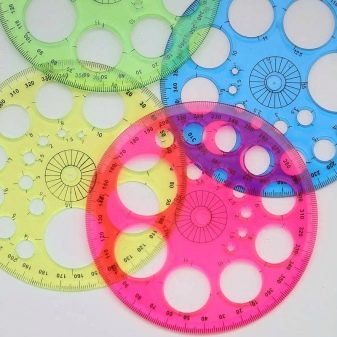
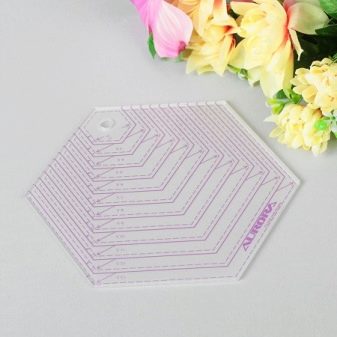
Features of choice and use
It's easy to use a patchwork ruler if you buy a durable and high-quality product. When choosing, you should pay attention to the following points.
- Of many types of materials, it is better to prefer acrylic, it meets all the characteristics necessary for working with a ruler.
- The thickness of the product should be 3 mm: if the model is thinner, strong adhesion to the fabric will not be achieved, and if it is thicker, the tool will be inconvenient to use.
- You should pay attention to the paint used for the markings. Even a hint of exfoliation indicates a lack of durability, such a tool will not last long.
- An important condition for the cinnamon process is that the tool has an anti-slip coating.
- When choosing, it is important to consider the compatibility of the ruler with the rug. For example, if the parameters of the mat are 45x60 cm, then the ruler must be at least 35–45 cm, otherwise problems will arise during use.
- It is better to choose the first tool large, with sufficient width, for example, 15x45 cm - it is convenient for them to check the corners on fabrics and details. Subsequently, the craftswomen are equipped with smaller models.
- For those who value the quality of the product, we suggest paying attention to the tools of well-known brands such as Fiskars, Omnigrid, Creative Grids.

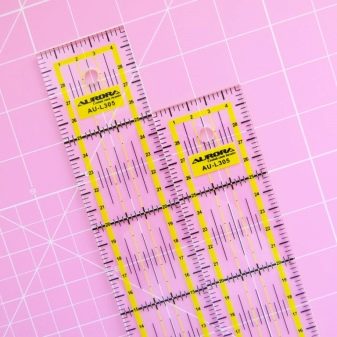
Having acquired a successful line, you can get to work. There are no specific rules and standards for using the tool, everyone adapts it to their specific needs. With the help of a ruler, you can cut out and trim any detail, make a pattern for an oblique inlay. To do this, the fabric is pressed tightly by the tool and cut with a knife along its edge. For firm fixation, special ruler holders are purchased, but you can do without them.
In the process of cutting, the tool is installed on the modeled part, then unnecessary trimming from under the knife will go to the side. If in the process of work the knife accidentally slides off, then it is the scrap that will be damaged, and not the part itself. You should work with the cut slowly, carefully, otherwise the curly flaps cut with an error will not match when sewing.
Patchwork rulers are not cheap, but contribute to a good patchwork finish and make it easier to make.
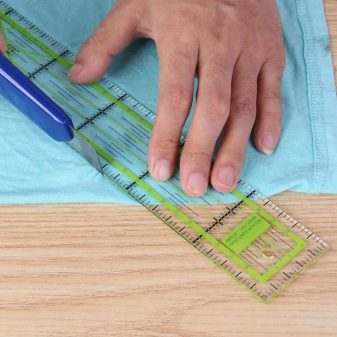
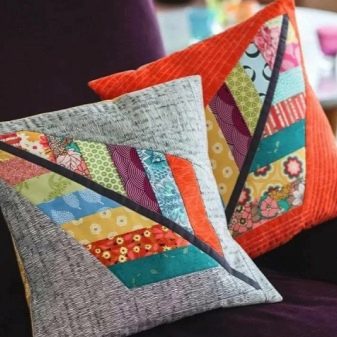
For information on how to work with the basic rulers for the Aurora patchwork, see the following video.








